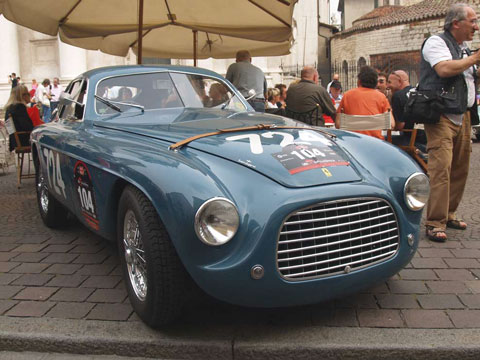
Did Ferrari coin the term “berlinetta”? If not, he certainly created many cars that defined the word. Here is perhaps the greatest berlinetta of all, 0026M, a 195 MM Ferrari driven to victory in the 1950 Mille Miglia.
All photos by Alessandro Gerelli
Story by staff.
This year, our photographer thought it might be interesting to concentrate his efforts on the Italian berlinettas which are so prevalent at this event. We thought so too, and decided write an etymology of the term “berlinetta” as applied to Italian two position coupes.
Part I will cover Alfa through Ferrari, Part II, Fiat through Siata.
In 1987, in an introduction to the book “Berlinettas: Classic coupes of yesterday and today”, Sergio Pininfarina wrote: “When Enzo Ferrari invented the word ‘Berlinetta’ to designate his Coupes, he meant to emphasize a particular set of qualities.” [sic]
Before we jump to our keyboards, however, Pininfarina’s words must be taken in context with the rest of the introduction which discusses the true meaning of the word berlinetta, primarily from Ferrari’s point of view. Also, Sergio was writing in Italian and someone did the translation, so he probably did not mean that Ferrari actually invented the word berlinetta as applied to automobile design.
Whoever coined the term, it is one of those marvelous words that transcend translation. Once–and only once–might anyone see a photo of a 1961/2 Ferrari 250 GT accompanied by the description, as a berlinetta and the association will have ensconced itself into the synapses forever. It is, of course, the diminutive of the word berlina, a feminine noun which means sedan, limousine, pillory or simply berlin. Whether or not the diminutive is a formal and proper word or simply the vernacular is unclear. It matters not; what matters is that as berlinetta is read or spoken, mental images of a medium to small, short wheelbase, aerodynamic, two place and tight rapidly coupe appear before thee. Along with, perhaps, a suitable. attractive traveling companion and equally idyllic traffic-free venues in Europe.
We can assume that the term preceded Ferrari’s supposed invention, as no doubt it was in general usage by the late 1920s, when sufficient technical advancements and wind cheating lines became de rigueur; many coachbuilders were creating fascinating coupes with rakish front windscreens which as least pretended to be aerodynamic. Events like Le Mans aided and abetted the rapid development of the berlinetta, and the Mille Miglia, established 1927, was another event which tested the merits of a coupe. In fact, from 1940, when a Touring built BMW coupe won a shortened event, to the last race in 1957, fifty percent of the winners were berlinettas.
Significantly, it was not until 1950, when Gianni Marzotto, driving a Ferrari 195S, won the “business suit” Mille Miglia that the berlinetta was well and truly established, along with the associated legends. The victory in 1948 of the Ferrari Allemano notchback coupe was a harbinger of things to come from Ferrari, but in fact it was Alfa Romeo and Touring that, as Sergio Pininfarina implied, gave birth to the term berlinetta. Ferrari was but a midwife.
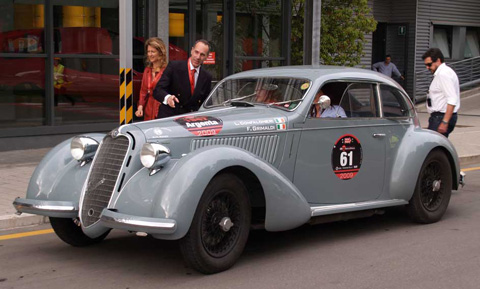
The Alfa Romeo Museum entered this 1938 6C 2300 Touring Mille Miglia. The 6C 2300 was the first Alfa to have an all metal body, and perhaps the first car to be described by designers as a ‘berlinetta’.
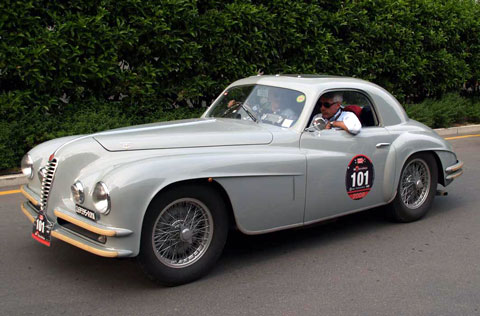
In the post war era, the Alfa Romeo 6C 2500 SS by Touring but with features similar to the Ferrari ‘barchetta’ of the same timeframe–1948-49.
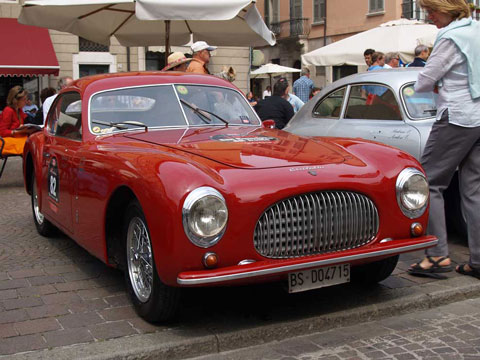
Cisitalia 202 Gran Sport of 1947. As the world knows, Dusio and Pininfarina took a new tack with the Cisitalia and further pushed the envelope-bodied car. But most certainly a classic berlinetta.
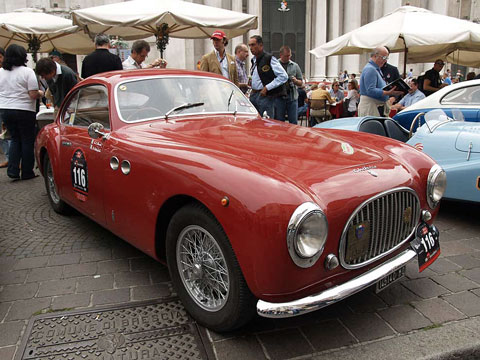
Cisitalia 202B of 1950 was a bit larger but still nothing compared with the size of a contemporary Buick. To see the two cars side by side was a culture shock.

See top photo caption. Below, Alessandro Gerelli has provided our readers with an amazingly comprehensive portfolio of the “Mille Miglia” Ferrari berlinetta, from the first barchetta coupe as seen above, to the last 250GTs to enter the famous race. They are in chronological order and we are going to assume that our readers are very familiar with the individual models.
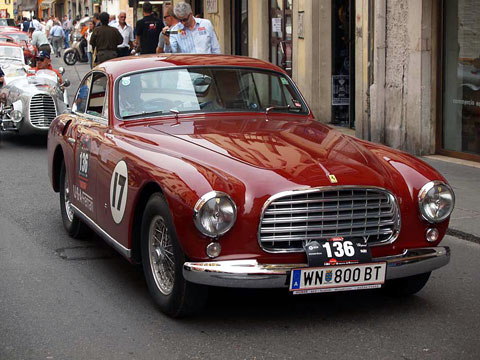
Ferrari 340 America of 1951 body by Ghia.
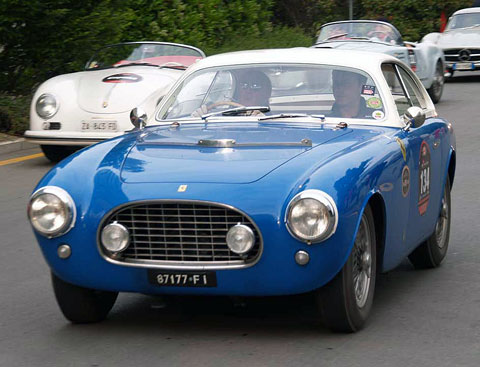
Ferrari 225 S Export berlinetta of 1951, Vignale.
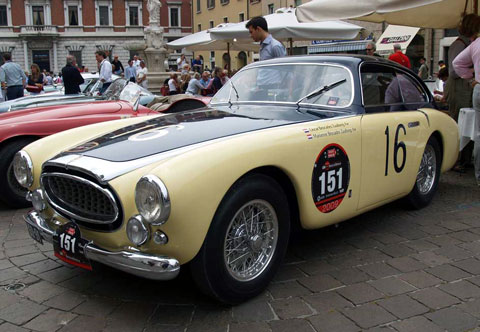
Ferrari 212 Export of 1951 by Vignale.
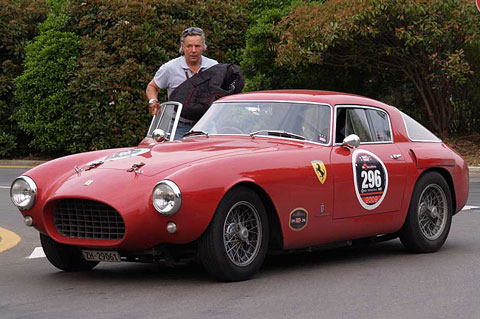
Ferrari 250 MM berlinetta of 1953, Pininfarina.
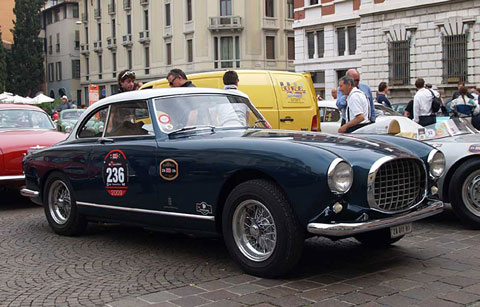
Ferrari 212 Inter of 1953, Pininfarina.
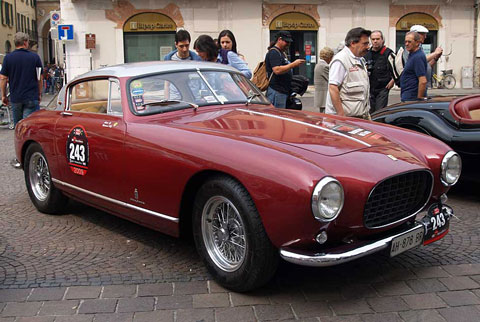
Ferrari 250 Europa GT of 1955, Pininfarina.
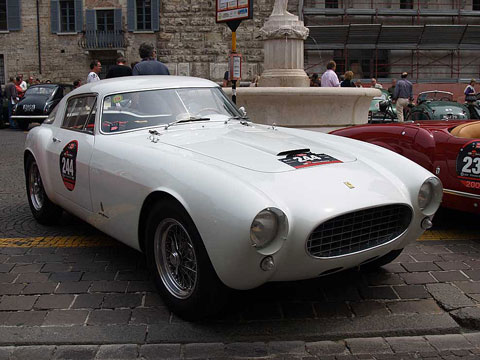
Ferrari 250 GT of 1955 by Pininfarina.
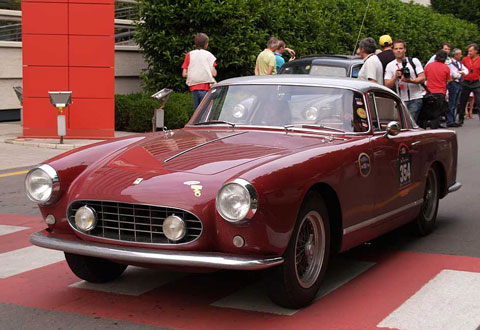
Ferrari 250 GT Boano 1957.
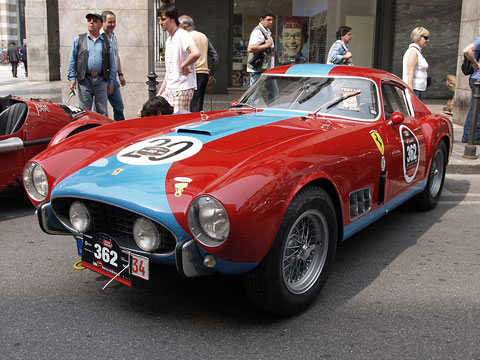
Ferrari 250 GT of 1957 body by Scaglietti. The race ends here, in 1957, but not the line of berlinettas, which continue to this day in the form of the Ferrari 430.
Great article and great pictures of little seen cars!
cliff reuter
http://www.etceterini.com
For me a Berlinetta is tighter and lighter than a GT. Its not a road car stripped to race, but first and foremost a car for competitive sport.
I’d not expect it to have bumpers and expect little space in the boot for more than the long range tank and spare wheel. I’d expect visability to be compromised and the cockpit to be hot and tight. I’d expect the body to be thin, easily dented, and not to last all that well.
Reading that back, to me a Berlinetta is a Sports Racer with a roof.
David
Hi Pete,
Nice article with great photos. I was a bit surprised to read in the captions for the two 202 coupes that the later 202 B is described as being “a bit larger.” I am not sure if this is correct, since I have both a 1948 and a 1951 202 coupe in my shop, and I am pretty sure that they are nominally the same dimensions, but I double check. If anything the earlier car has a slightly more pronounced raised roof height over the split “V” windshield, which can also be seen in your photos. Perhaps when one piece windshields were introduced, after about 100 cars were made, this allowed less upward extension of the roof line, since the “V” no longer had to be blended into the roof top. Aside from moving from split to single windshields the later cars had chrome plated brass 17 blade grills and larger chrome plated steel bumpers, plus many structural changes to improve steering and chassis stiffness. The early 202 coupes had a 23 blade aluminum grills and elegant thin aluminum bumpers. There are of course many small variations between Vignali, Stabilimenti Farina and Pinin Farina, who all made 202 coupes.
Ed Godshalk
Hello,
As we took part I was wondering if your photographer took also pictures of the english cars. We drove the works TR2 OVC276 with nr 278. If you have pictures I would love to see them.
Kind regards
Pascal